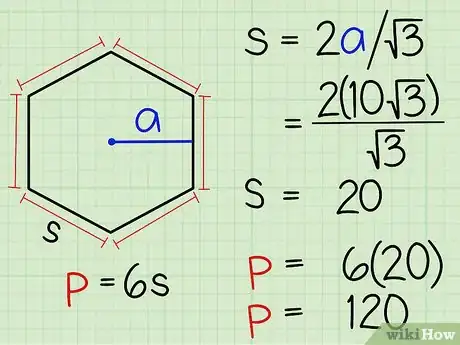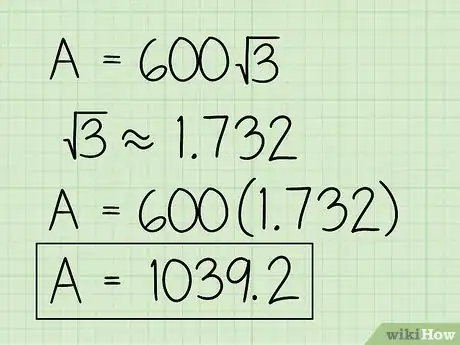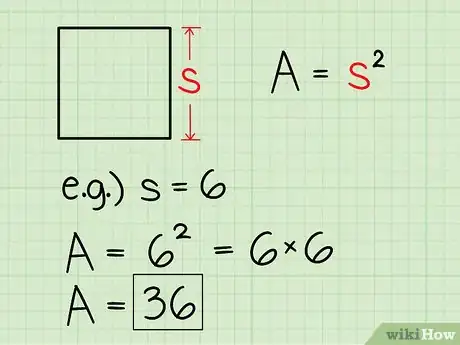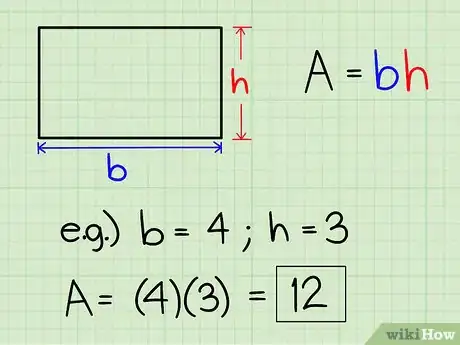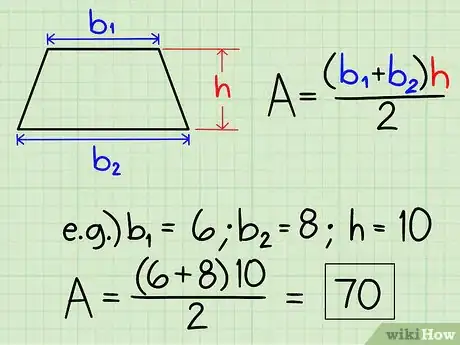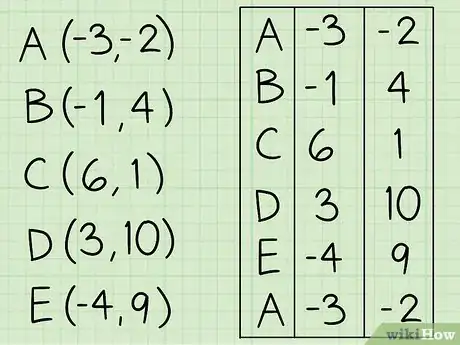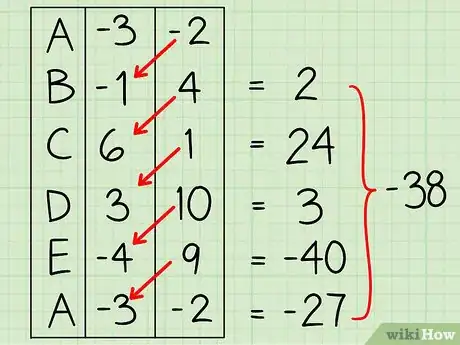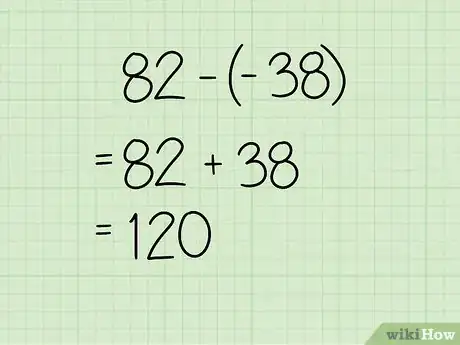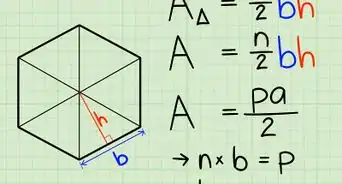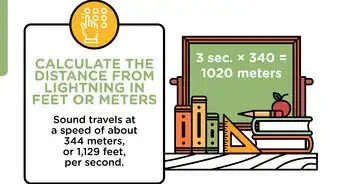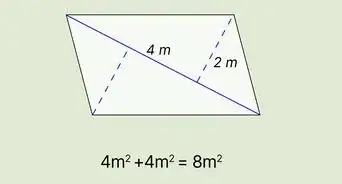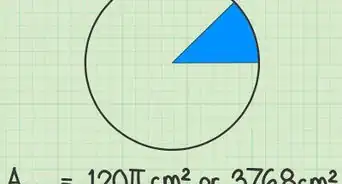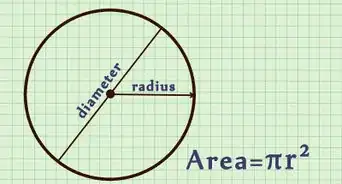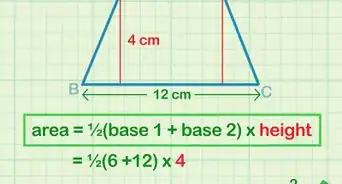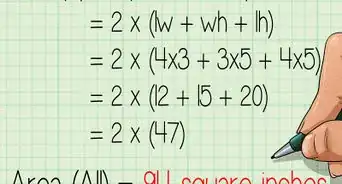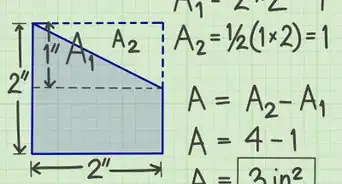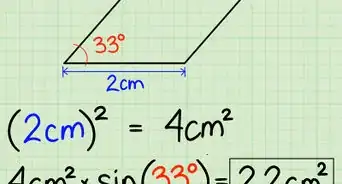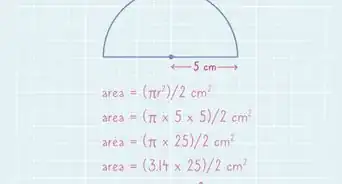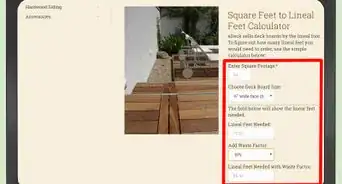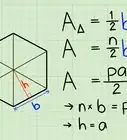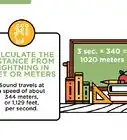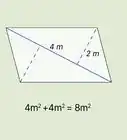This article was co-authored by David Jia. David Jia is an Academic Tutor and the Founder of LA Math Tutoring, a private tutoring company based in Los Angeles, California. With over 10 years of teaching experience, David works with students of all ages and grades in various subjects, as well as college admissions counseling and test preparation for the SAT, ACT, ISEE, and more. After attaining a perfect 800 math score and a 690 English score on the SAT, David was awarded the Dickinson Scholarship from the University of Miami, where he graduated with a Bachelor’s degree in Business Administration. Additionally, David has worked as an instructor for online videos for textbook companies such as Larson Texts, Big Ideas Learning, and Big Ideas Math.
There are 7 references cited in this article, which can be found at the bottom of the page.
This article has been viewed 1,451,710 times.
Calculating the area of a polygon can be as simple as finding the area of a regular triangle or as complicated as finding the area of an irregular eleven-sided shape. If you want to know how to find the area of a variety of polygons, just follow these steps.
Steps
Area Help
Finding the Area with Apothems
-
1Write down the formula for finding the area of a regular polygon. To find the area of a regular polygon, all you have to do is follow this simple formula: area = 1/2 x perimeter x apothem.[1] Here is what it means:
-
2Find the apothem of the polygon. If you're using the apothem method, then the apothem will be provided for you. Let's say you're working with a hexagon that has an apothem with a length of 10√3.Advertisement
-
3Find the perimeter of the polygon. If the perimeter is provided for you, then you're nearly done, but it's likely that you have a bit more work to do. If the apothem is provided for you and you know that you're working with a regular polygon, then you can use it to find the perimeter. Here's how you do it:[4]
- Think of the apothem as being the "x√3" side of a 30-60-90 triangle. You can think of it this way because the hexagon is made up of six equilateral triangles. The apothem cuts one of them in half, creating a triangle with 30-60-90 degree angles.
- You know that the side across from the 60 degree angle has length = x√3, the side across from the 30 degree angle has length = x, and the side across from the 90 degree angle has length = 2x. If 10√3 represents "x√3," then you can see that x = 10.
- You know that x = half the length of the bottom side of the triangle. Double it to get the full length. The bottom side of the triangle is 20 units long. There are six of these sides to the hexagon, so multiply 20 x 6 to get 120, the perimeter of the hexagon.
-
4Plug the apothem and the perimeter into the formula. If you're using the formula area = 1/2 x perimeter x apothem, then you can plug in 120 for the perimeter and 10√3 for the apothem. Here is what it will look like:[5]
- area = 1/2 x 120 x 10√3
- area = 60 x 10√3
- area = 600√3
-
5Simplify your answer. You may need to state your answer in decimal instead of square root form. Just use your calculator to find the closest value for √3 and multiply it by 600. √3 x 600 = 1,039.2. This is your final answer.[6]
Finding the Area of Regular Polygons Using Other Formulas
-
1Find the area of a regular triangle. If you want to find the area of a regular triangle, all you have to do is follow this formula: area = 1/2 x base x height.
- If you have a triangle with a base of 10 and a height of 8, then the area = 1/2 x 8 x 10, or 40.
-
2Find the area of a square. To find the area of a square, just square the length of one side. This is really the same thing as multiplying the base of the square by its height, because the base and height are the same.
- If the square has a side length of 6, then the area is 6 x 6, or 36.
-
3Find the area of a rectangle. To find the area of a rectangle, simply multiply the base times the height.
- If the base of the rectangle is 4 and the height is 3, then the area of the rectangle is 4 x 3, or 12.
-
4Find the area of a trapezoid. The find the area of a trapezoid, you just have to follow this formula: area = [(base 1 + base 2) x height]/2.
- Let's say you have a trapezoid with bases that have a length of 6 and 8 and a height of 10. The area is simple [(6 + 8) x 10]/2, which can be simplified to (14 x 10)/2, or 140/2, which makes for an area of 70.
Finding the Area of Irregular Polygons
-
1
-
2Create an array. List the x and y coordinates of each vertex of the polygon in counterclockwise order. Repeat the coordinates of the first point at the bottom of the list.[9]
-
3Multiply the x coordinate of each vertex by the y coordinate of the next vertex. Add the results. The added sum of these products is 82.
-
4Multiply the y coordinate of each vertex by the x coordinate of the next vertex. Again, add these results. The added total of these products is -38.
-
5Subtract the sum of the second products from the sum of the first products. Subtract -38 from 82 to get 82 - (-38) = 120.
-
6Divide this difference by 2 to get the area of the polygon. Just divide 120 by 2 to get 60 and you're all done.
Expert Q&A
-
QuestionHow can I calculate the area of an irregular polygon?
 David JiaDavid Jia is an Academic Tutor and the Founder of LA Math Tutoring, a private tutoring company based in Los Angeles, California. With over 10 years of teaching experience, David works with students of all ages and grades in various subjects, as well as college admissions counseling and test preparation for the SAT, ACT, ISEE, and more. After attaining a perfect 800 math score and a 690 English score on the SAT, David was awarded the Dickinson Scholarship from the University of Miami, where he graduated with a Bachelor’s degree in Business Administration. Additionally, David has worked as an instructor for online videos for textbook companies such as Larson Texts, Big Ideas Learning, and Big Ideas Math.
David JiaDavid Jia is an Academic Tutor and the Founder of LA Math Tutoring, a private tutoring company based in Los Angeles, California. With over 10 years of teaching experience, David works with students of all ages and grades in various subjects, as well as college admissions counseling and test preparation for the SAT, ACT, ISEE, and more. After attaining a perfect 800 math score and a 690 English score on the SAT, David was awarded the Dickinson Scholarship from the University of Miami, where he graduated with a Bachelor’s degree in Business Administration. Additionally, David has worked as an instructor for online videos for textbook companies such as Larson Texts, Big Ideas Learning, and Big Ideas Math.
Academic Tutor Divide the polygon into several triangles. Then, calculate the area of each triangle by multiplying the base by half of the height. Add the different areas together to find the total area of the polygon.
Divide the polygon into several triangles. Then, calculate the area of each triangle by multiplying the base by half of the height. Add the different areas together to find the total area of the polygon. -
QuestionHow do I calculate the area of an octagon?
 Community AnswerCut it into smaller shapes, such as triangles or other quadrilaterals using angles. Find the area of each smaller shape, then add the areas together to find the area of the whole shape.
Community AnswerCut it into smaller shapes, such as triangles or other quadrilaterals using angles. Find the area of each smaller shape, then add the areas together to find the area of the whole shape. -
QuestionHow do I find the area of a 4-sided shape?
 DonaganTop AnswererAssuming it's not a square or rectangle, you would have to subdivide the figure into smaller sections consisting of squares, rectangles, triangles, and other shapes whose areas can be easily calculated. Then add those areas together.
DonaganTop AnswererAssuming it's not a square or rectangle, you would have to subdivide the figure into smaller sections consisting of squares, rectangles, triangles, and other shapes whose areas can be easily calculated. Then add those areas together.
References
- ↑ https://www.mathopenref.com/polygonregulararea.html
- ↑ https://www.mathsisfun.com/geometry/perimeter.html
- ↑ https://www.mathsisfun.com/definitions/apothem.html
- ↑ https://www.cuemath.com/geometry/area-of-polygons/
- ↑ https://www.cuemath.com/geometry/area-of-polygons/
- ↑ https://www.cuemath.com/geometry/area-of-polygons/
- ↑ https://www.mathopenref.com/vertex.html
- ↑ https://www.mathopenref.com/coordpolygonarea.html
- ↑ https://www.mathsisfun.com/geometry/area-irregular-polygons.html
About This Article
A polygon is any kind of closed, 2-dimensional shape with at least 3 straight sides and no curves. If a polygon is regular—that is, all of its sides are the same length—you can easily find the area given the side length and the apothem. The apothem is the distance from the exact center of the polygon to the center of any of the sides. If you know the apothem and the side length, simply use the formula area = ½ x perimeter x apothem. You can find the perimeter by adding together the lengths of all the sides, or multiplying the length of a side by the number of sides. For example, say you have a hexagon with an apothem that has a length of 3 units, and each side has a length of 7 units. Multiply 7 by 6 (the number of sides in the hexagon) to find the perimeter of 42 units. Multiply 42 x 3 x ½ to get an area of 63 square units. Some types of polygons have their own special formulas that you can use to find the area. For instance, to calculate the area of a triangle, use the formula ½ x base x height. For a rectangle, all you need to do is multiply length times width. Since the length and width are the same for a square, simply square the length of one of the sides to calculate the area. If your shape is a trapezoid, add together the lengths of the two parallel sides, then multiply the sum by the height of the trapezoid. Divide the result by 2 to get the area. In other words, use the formula area = (base1 + base2) x h x ½. When you’re dealing with an irregular polygon, things get a little trickier. The easiest way to find the area of an irregular polygon is to plot it on a graph and find the coordinates of each of the vertices, or corners. Create a table with the x-coordinate of each vertex in one column, and the y-coordinate of each vertex in the next column. Multiply the x-coordinate of each vertex by the y-coordinate of the vertex below it in the table and add all the products together. Then go back the other way, and multiply each y-coordinate by the x-coordinate below it. Add together those products as well. Subtract the sum of the second set of products from the sum of the first set, then divide the difference by 2 to find the area of the polygon. If you need to calculate the area of an irregularly-shaped polygon, keep reading to learn how!





